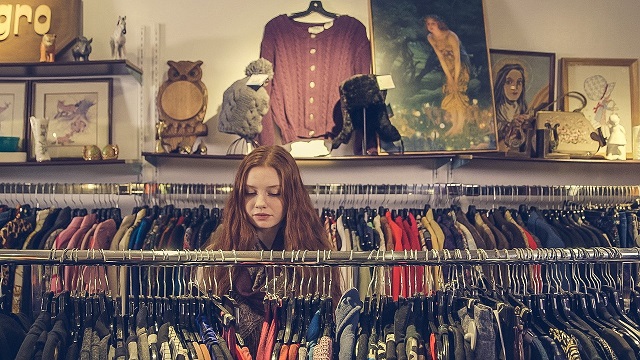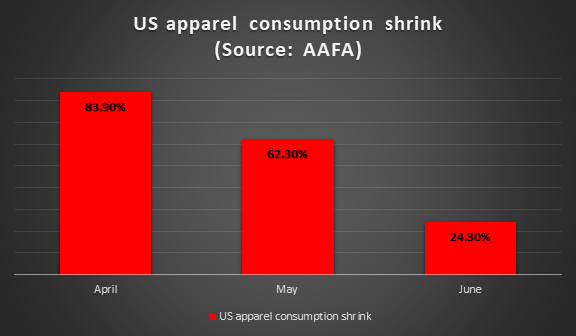The most uttered topic of the COVID-19 pandemic has created a deep wound in the whole fashion retail and its supply chain. For instance, one of the biggest apparel consumer market – the USA’s consumption has been shrunk by 50%.

As the US presidential election nears, President Donald Trump – in a patriotic zeal, continuously distancing with China by tariff hiking. Which is greatly impacting the fashion apparel industry. And industry experts say that the President’s China tariff hikes is counteracting the advances made from his tax cuts, and negatively impacting US employment.
Nate Herman, Senior Vice-President of Policy at the American Apparel & Footwear Association (AAFA) opines, “The retail sales speak for itself; they were down by 83.9% in April, 62.3% in May and 24.3% in June. On top of it, the fashion consumption is headed for a 50% decline to around US$200bn, except trade recovers sharply during the coming winter and Christmas holidays.”
China is the biggest manufacturing hub worldwide. And the top apparel manufacturer globally. The worsening relationship among the two super-powers is hitting American apparel brands and retailers as they import the majority of their readymade garments (RMG) from China.
Sour points
According to AAFA executives, one of the Phase 1 agreement obligations was China’s ramping up purchases of US cotton and textiles to roughly $1bn a year from $500m to $600m before the January deal. Which China failed.
Other hot-points like intellectual property (IP) theft is distancing the two countries greatly. Many Chinese companies have been able to register a trademark that is a near copy of a USA rival brand for years and continuously doing over the previous six months, in spite of Beijing’s pledges that it would stop these activities.
Nate Herman highlights a Chinese brand, New Brunden, that copied New Balance’s name, logo, design and marketing against which the US footwear brand continues legal battle without much progress.
Herman stressed, “We are observing with great worry that the Phase 1 deal has not resulted the way Trump hoped for and there is cumulative pressure for him to take a hard stance on China as we near the elections.”
The very recent development of sanctions against China’s Xianjing Production and Construction Corporation (XPCC) over serious right abuses in the Xinjiang Uyghur Autonomous Region (XUAR) by the US Department of Treasury’s Office of Foreign Assets Control (OFAC) has boosted claims of rights abuses against the Uyghur ethnic communities by China’s apparel industry. XUAR makes the majority of China’s cotton, vital to producing apparel for US consumption.
“There are rising calls for limiting imports of apparel that include cotton and yarn from Xianjing,” adds Herman, noting that this could dent apparel makers’ capability to make cheap goods.
Making the USA great again
The Trump Administration will face elections in November. And it has failed to re-shore the apparel manufacturing industry or make American textiles ‘great again’ by increasing its headcount.
“One of the fearful things for businesses is uncertainty and they cannot make investments in uncertain situations,” Herman explains.
“And since Trump took power, we have had uncertainty with the trade war and tariffs which greatly impacted our manufacturing industry. Trump made it harder to produce fabric, yarn and apparel in the US by imposing tariffs on Chinese fabric, yarn and apparel.”
Herman gives an example. “If apparel makers used US cotton and sent it to China, they are liable to pay a 25% punitive tariff and if they made clothes there and transported it back, then it will be 15%, meaning apparel brands get hit twice,”
Sadly, for US apparel retailers and brands, the tariff hikes threw any advantages from Trump’s prevalent corporate tax cuts, so the final benefit was worthless.
As the US industry struggling as it currently employs 340,000 workers. Whereas 360,000 workers in 2016 when Trump was elected.
Source:Textile Today
